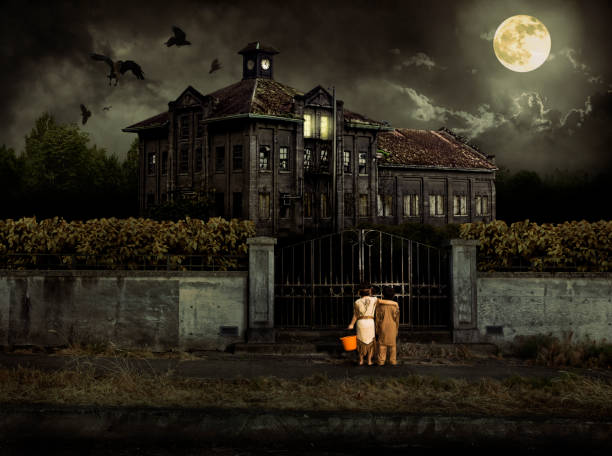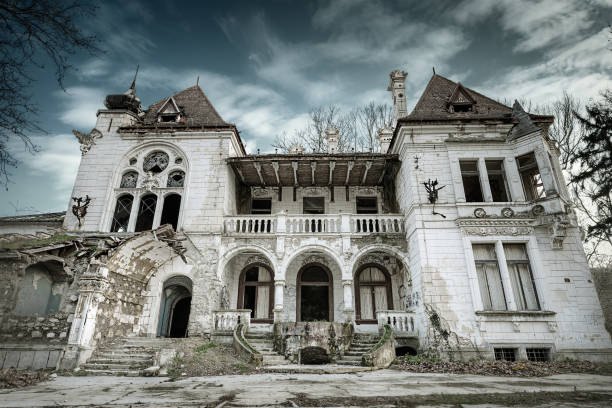In the world of urban exploration and abandoned places, few discoveries capture the imagination quite like stumbling upon a house frozen in time. Recently, explorers made an extraordinary find that has left the exploration community buzzing: an abandoned home literally packed floor to ceiling with thousands of toys in every single room. This isn’t your typical empty, decaying house – this is something entirely different, a surreal time capsule that challenges everything we think we know about abandoned properties.
The First Glimpse: Walking Into a Toy Wonderland Gone Wrong
When the front door creaked open, nothing could have prepared visitors for what lay inside. Instead of the usual empty rooms, broken furniture, and debris typical of abandoned homes, every single room was packed with toys. Not just a few scattered playthings, but literally thousands upon thousands of toys stacked from floor to ceiling, creating narrow pathways through what can only be described as a toy maze.
The sheer volume is staggering. Action figures, dolls, board games, stuffed animals, toy cars, building blocks, electronic games, and countless other playthings fill every available space. It’s as if someone had been collecting toys for decades without ever throwing a single one away, creating layers upon layers of childhood memories now left to gather dust in an empty house.
The Photography Challenge: Capturing the Uncapturable
One of the most frustrating aspects of exploring this incredible abandoned toy house is trying to capture its essence through photography. The cramped conditions, with toys stacked to the ceiling, make it nearly impossible to get a proper wide-angle shot that truly shows the scope of the collection. Every photograph feels inadequate, unable to convey the overwhelming nature of walking through rooms where you can barely see the walls or ceiling.
The lighting presents another challenge. Most abandoned homes rely on natural light filtering through dirty windows, but when toys are stacked floor to ceiling, even that limited light gets blocked. Flash photography creates harsh shadows and reflections off plastic surfaces, while the narrow pathways between toy mountains make it difficult to position cameras for optimal shots.
Photographers attempting to document this extraordinary find often express frustration at their inability to capture the full impact. “You really have to be there to understand it,” is a common refrain. The two-dimensional nature of photographs simply cannot convey the three-dimensional maze of toys that greets visitors.
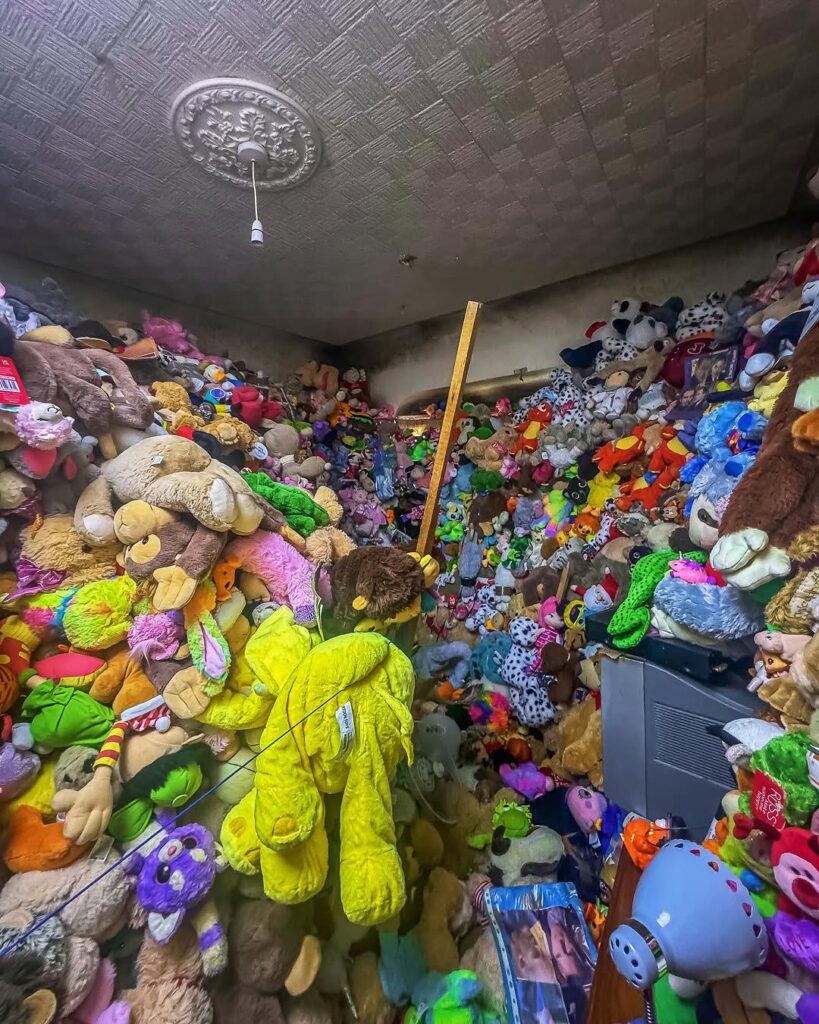
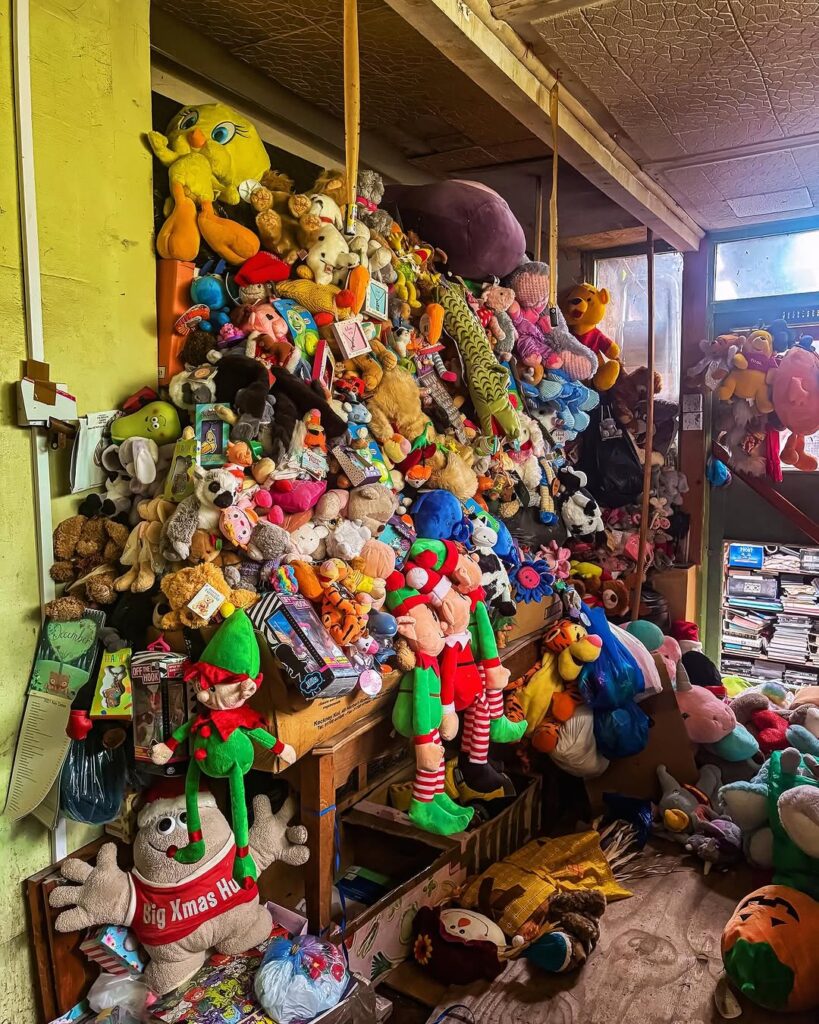
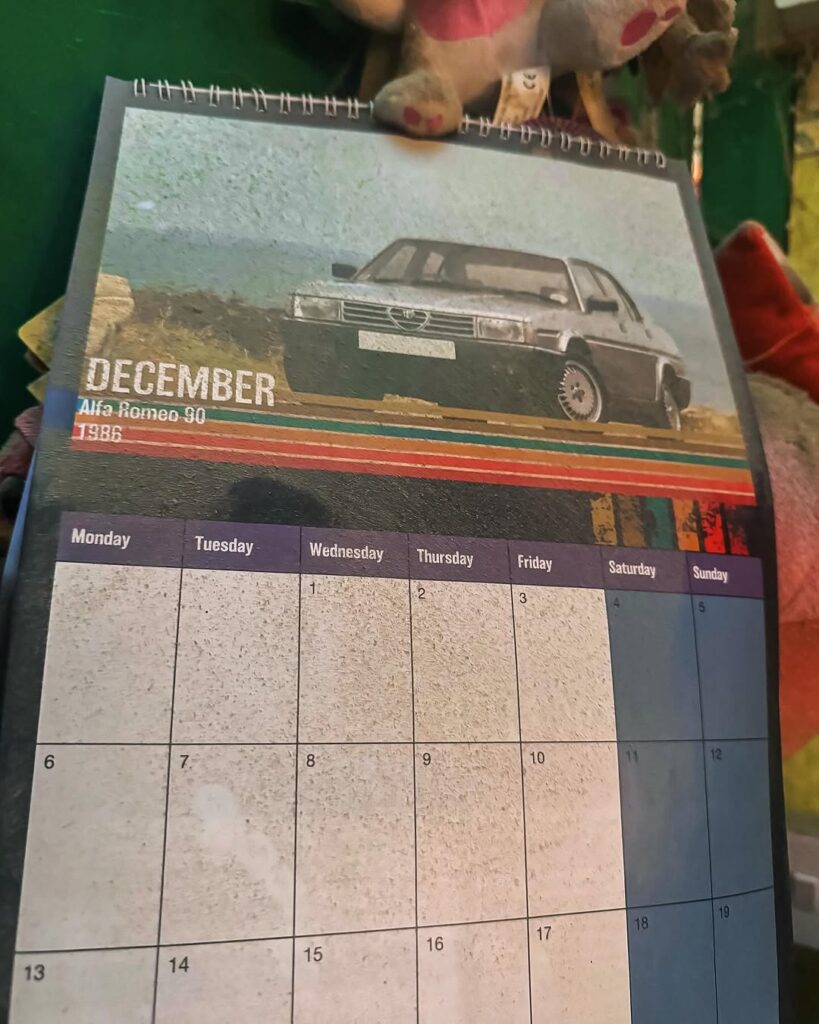
A Different Kind of Abandoned Exploration Experience
Most abandoned places offer a sense of decay and emptiness that urban explorers find haunting and beautiful in its own way. This toy-filled house provides a completely different experience – one that’s simultaneously fascinating and overwhelming. Instead of the usual quiet, contemplative atmosphere of abandoned exploration, visitors find themselves navigating through tunnels of toys, each step potentially disturbing carefully balanced stacks of playthings.
The experience is both childlike and deeply unsettling. There’s something profoundly sad about thousands of toys – objects designed to bring joy and spark imagination – sitting abandoned and forgotten. Each toy likely represents a moment of happiness, a birthday gift, a Christmas morning surprise, or a simple purchase to brighten a child’s day. Now they sit in silent rows, witnesses to whatever circumstances led to the abandonment of this incredible collection.
The Mystery Behind the Collection
Perhaps the most intriguing aspect of this abandoned toy house is the mystery surrounding how and why such an extensive collection came to exist. Several theories emerge when considering the possibilities:
The Collector Theory
One possibility is that this was the home of a serious toy collector who spent decades amassing thousands of items. Toy collecting is a legitimate hobby with many enthusiasts who focus on specific brands, eras, or types of toys. However, the sheer volume and apparent randomness of this collection suggests something beyond typical collecting behavior.
The Dealer Scenario
Another theory suggests this might have been someone involved in buying and selling toys, either as a business venture or side hustle. The quantity would make sense if this person was purchasing large lots of toys from estate sales, garage sales, or other sources with the intention of reselling them. The abandonment might indicate financial difficulties or health issues that prevented the continuation of this business.
The Generational Accumulation
A third possibility is that multiple generations of the same family contributed to this collection over many years. Grandparents might have saved toys from their children, who then added their own children’s toys, creating a multi-generational accumulation that eventually overwhelmed the living space.
The Hoarding Situation
Unfortunately, the most likely explanation may be that this represents a hoarding situation that got completely out of control. Hoarding disorder can manifest in many ways, and toy hoarding – while less common than other types – does occur. The inability to discard items, combined with compulsive acquiring, could easily lead to this type of overwhelming accumulation.
The Emotional Impact of Thousands of Abandoned Toys
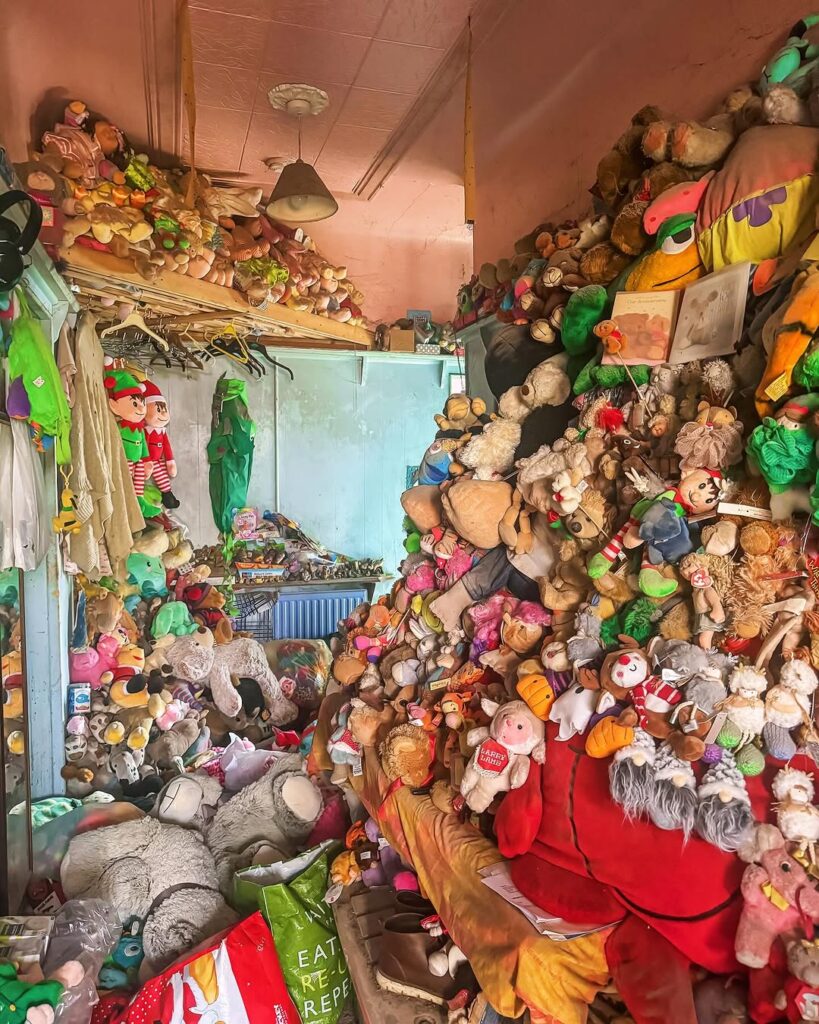
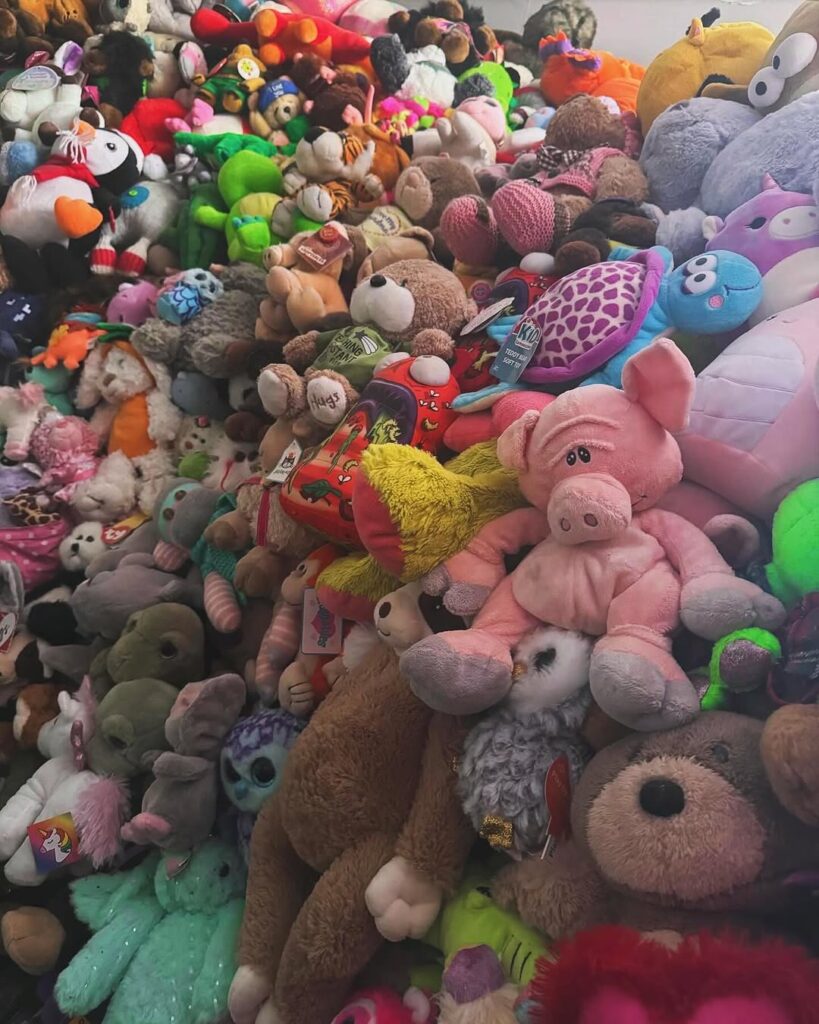
Walking through rooms packed with toys creates a unique emotional experience that differs significantly from other abandoned places. There’s an inherent sadness in seeing objects designed to create happiness sitting forgotten and gathering dust. Each toy tells a story – not just of the child who might have played with it, but of the adult who chose to keep it long past its useful life.
The stuffed animals are particularly poignant. Teddy bears, dolls, and other plush toys seem to watch visitors with glassy eyes, their fabric faces bearing the wear of love and time. These items, which once provided comfort and companionship, now sit in silent rows like a forgotten army of childhood friends.
Action figures stand in eternal poses, their adventures frozen mid-story. Board games stack in towers, their promise of family fun time reduced to cardboard weight in an empty house. Electronic toys from various decades represent the evolution of play, from simple battery-operated cars to early handheld games that once seemed like magic to young eyes.
The Practical Challenges of Exploration
Beyond the emotional impact, this toy-filled abandoned house presents unique practical challenges for explorers. The narrow pathways between stacked toys make movement difficult and potentially dangerous. One wrong step could cause an avalanche of toys, potentially trapping or injuring visitors. The structural integrity of floors bearing the weight of thousands of toys also raises safety concerns.
Navigation becomes a puzzle in itself. Without clear sight lines, it’s easy to become disoriented in the maze-like environment. Some rooms are so packed that entry is impossible without moving significant amounts of toys, which most responsible explorers avoid doing to preserve the site’s condition.
The dust and potential mold issues also create health concerns. Decades of accumulated toys, many made of various plastics and fabrics, create a environment where allergens and potentially harmful particles can accumulate. Proper protective equipment becomes essential for extended exploration.
The Historical Value of Abandoned Toy Collections
From a historical perspective, this abandoned toy collection represents an accidental museum of childhood across multiple decades. The toys span various eras, from vintage items that could be worth significant money to mass-produced pieces from more recent years. Together, they create a timeline of how children’s entertainment has evolved.
Vintage toys from the 1960s through 1980s sit alongside more modern items, creating a fascinating juxtaposition of different manufacturing techniques, safety standards, and design philosophies. Collectors and toy historians would likely find incredible treasures buried within these stacks, from rare action figures to discontinued board games.
The condition of many items varies greatly. Some toys remain in pristine condition, protected by the sheer volume of surrounding items, while others show signs of age, play, or environmental damage. This variation adds another layer to the historical significance, showing not just what toys existed, but how they were used and preserved.
The Ethics of Exploring Abandoned Toy Houses
The discovery of this incredible abandoned toy house raises important ethical questions about exploration and documentation. Unlike typical abandoned buildings where removal of small items might be overlooked, the clear monetary and sentimental value of many of these toys makes the ethical landscape more complex.
Responsible urban explorers follow the principle of “take only photos, leave only footprints,” but in a situation like this, even taking photographs feels like a significant intrusion into someone’s private collection. The toys represent not just abandoned objects, but potentially valuable assets that belong to someone, even if that ownership is currently unclear.
The question of whether to publicize the location becomes particularly sensitive. While the discovery is fascinating and worthy of documentation, revealing too much information could lead to looting or vandalism that would destroy this unique site forever.
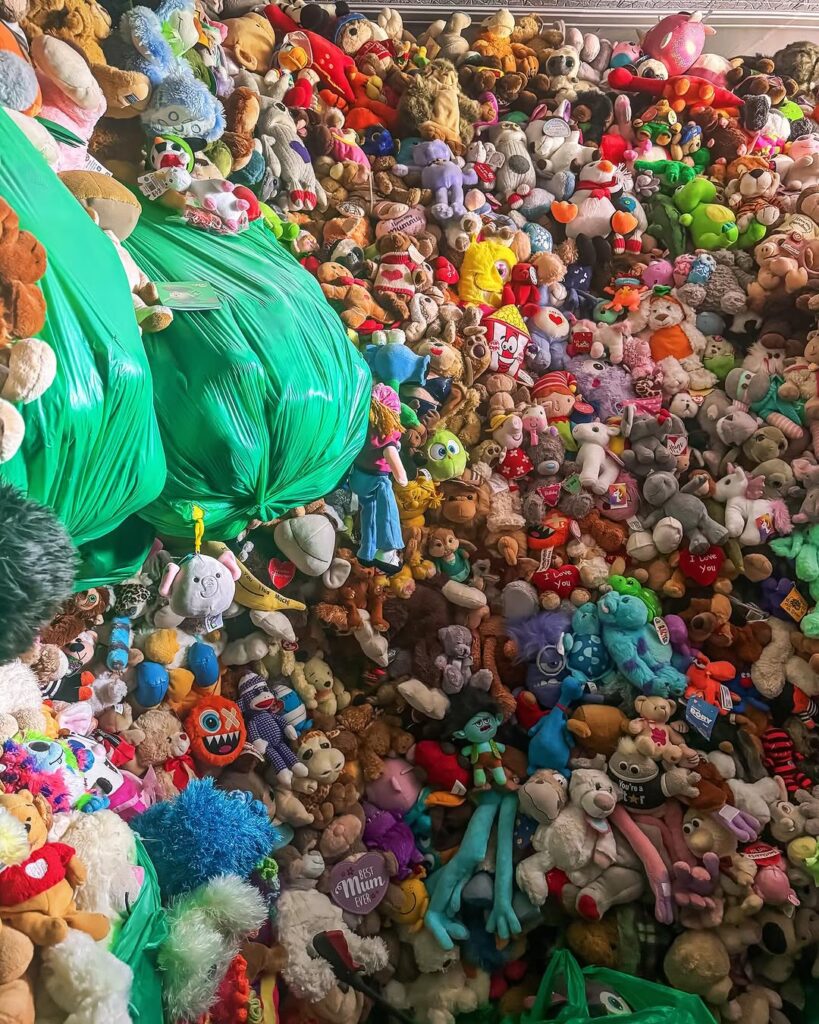
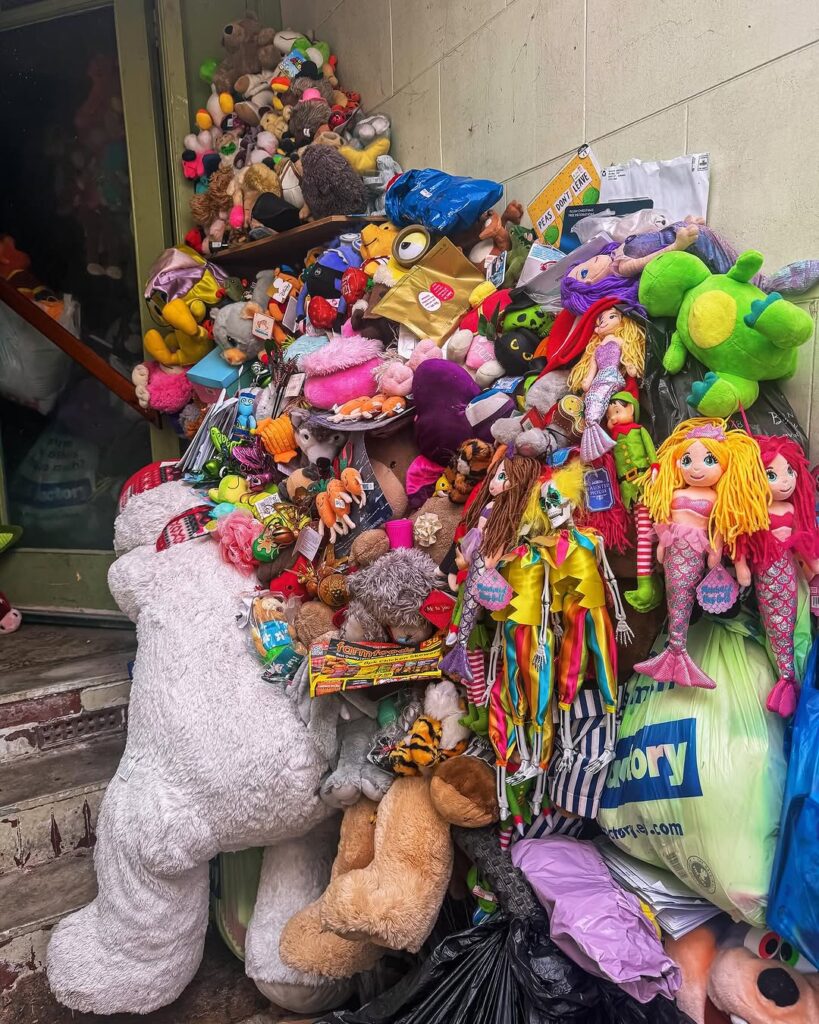
The Photography Documentation Process
Despite the challenges, serious efforts to document this incredible find require careful planning and specialized techniques. Photographers working in this environment often employ several strategies to capture the overwhelming nature of the collection:
Macro Photography Approaches
Close-up shots of individual toys or small groups can highlight the incredible variety and condition of items within the collection. These detail shots help viewers understand the scope through accumulated evidence rather than wide-angle attempts.
Pathway Documentation
Photographing the narrow walkways between toy mountains helps convey the maze-like nature of navigating the space. These shots show how the toys have essentially restructured the interior of the house.
Layered Composition Techniques
Some photographers attempt to capture the layered nature of the collection by focusing on foreground toys while showing the depth of items stretching into the background. This technique helps suggest the incredible volume even when the full scope cannot be captured in a single frame.
Light Painting Methods
Advanced photographers sometimes use light painting techniques, using portable LED lights to illuminate different sections of toy stacks during long exposures. This can help reveal details in the darker recesses of the collection while maintaining the mysterious atmosphere.
The Social Media Challenge
In our current age of social media documentation, this abandoned toy house presents unique challenges for content creators. The visual impact that makes such a strong impression in person simply doesn’t translate well to photographs or videos. Content creators often express frustration at their inability to share the true magnitude of the discovery with their audiences.
Short-form video content, popular on platforms like TikTok and Instagram, struggles particularly with this type of subject matter. The overwhelming nature of the collection requires time to process and appreciate, something that doesn’t fit well with quick social media consumption patterns.
Longer-form content creators fare better, able to take time to explore different rooms and attempt to convey the scope through accumulated footage. However, even extended videos struggle to capture the physical sensation of being surrounded by thousands of toys in every direction.
The Preservation Question
The discovery of this incredible abandoned toy collection raises important questions about preservation. Should such a unique find be documented and preserved for historical purposes? The toys represent not just individual items, but a collective snapshot of American childhood culture across multiple decades.
However, the practical challenges of preserving such a massive collection are enormous. The house itself appears to be in declining condition, and the weight of thousands of toys may be contributing to structural problems. Professional preservation would require massive resources and expertise in both building restoration and toy conservation.
The question becomes whether it’s better to leave the collection as found, accepting that natural decay will eventually claim both house and toys, or to attempt some form of intervention that might save the most historically significant pieces while potentially disturbing the incredible integrity of the site as it exists.
The Community Impact
Local communities often have mixed reactions to the discovery of significant abandoned properties. In the case of this toy-filled house, the reaction tends toward fascination rather than the concern that might greet a typical abandoned building. The whimsical nature of toys makes the abandonment seem less threatening and more mysterious.
However, increased attention can also bring problems. Curious visitors who lack experience in responsible exploration might damage the site or disturb the carefully balanced toy arrangements. The local community might also have concerns about increased traffic to what was previously a quiet abandoned property.
Property management and legal questions also arise. Who owns the toys? What are the legal obligations regarding such a massive abandoned collection? These questions often lack clear answers, particularly when property ownership is unclear or disputed.

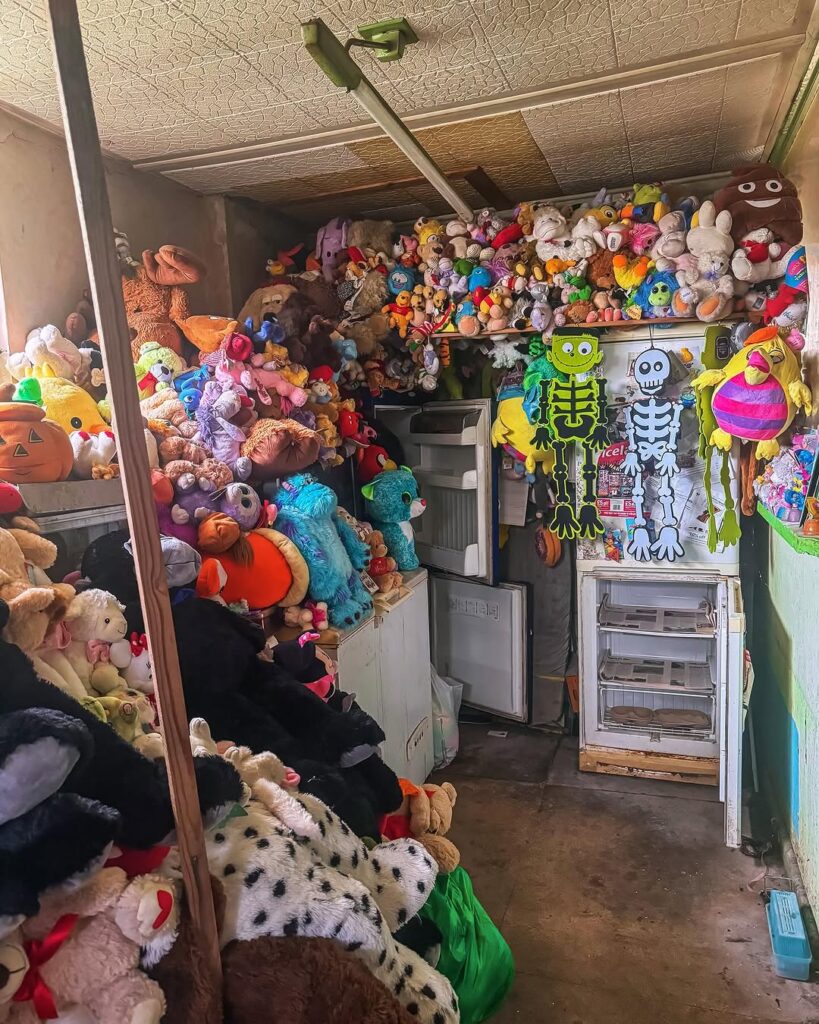
The Future of This Incredible Discovery
As word spreads about this amazing abandoned toy house, questions arise about its future. The combination of structural concerns, legal complications, and the incredible value of the collection creates a complex situation without easy solutions.
Some possibilities include:
- Professional documentation and selective preservation of the most historically significant items
- Conversion into a legitimate museum or educational facility
- Gradual deterioration as the house continues to decay
- Intervention by family members or legal heirs who might claim the collection
- Removal and sale of items to collectors and museums
Each potential outcome would represent a different ending to this incredible story of accumulated childhood memories.
Conclusion: A Truly Different Kind of Abandoned Exploration
The abandoned house filled with thousands of toys represents something truly unique in the world of urban exploration and abandoned places. It challenges our preconceptions about what abandoned properties contain and forces us to confront the emotional weight of objects designed to bring joy sitting forgotten and unused.
The photography challenges, navigation difficulties, and overwhelming sensory experience combine to create something that must be experienced to be truly understood. While photographs and videos can hint at the incredible nature of this discovery, they inevitably fall short of conveying the full impact of standing in rooms packed floor to ceiling with childhood memories.
This discovery reminds us that abandoned places aren’t just about decay and emptiness – sometimes they preserve moments in time that tell stories we never expected to find. In a world where childhood seems increasingly digital and ephemeral, this house full of physical toys represents a tangible connection to the way previous generations played, learned, and grew.
Whether this incredible collection will be preserved, dispersed, or left to decay with its abandoned home, it has already served as a powerful reminder of the objects we accumulate, the memories we preserve, and the stories that survive long after we’re gone. For those fortunate enough to experience it firsthand, it represents a truly different way to spend a day exploring the unexpected corners of our world.
The house full of toys stands as a testament to the complexity of human attachment to objects, the power of childhood memories, and the incredible discoveries that await those willing to look beyond the ordinary abandoned places. It’s a reminder that sometimes the most extraordinary finds are hiding in the most unexpected places, waiting to challenge everything we think we know about exploration and abandonment.
![]()




